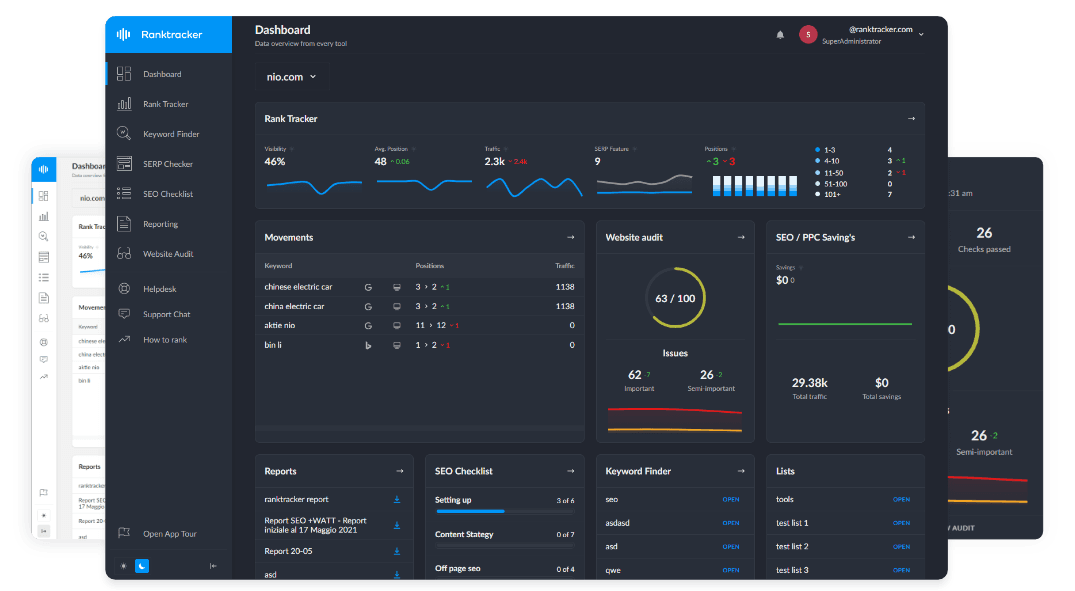Intro
Managing IT assets can feel like juggling too many tasks at once. Hardware gets misplaced, software licenses go unused, and costs spiral out of control. Many businesses struggle to keep up with outdated systems or manual tracking methods that waste time and resources.
Here's the key point: modern IT asset strategies make a significant difference. With tools like automation, real-time data, and better integration, companies are simplifying their processes while saving money. A smart approach isn’t just convenient—it’s essential for staying competitive.
This blog will show you how to improve your operations with efficient asset management techniques. You’ll learn practical steps to reduce waste, increase productivity, and protect your IT investments.
Ready to take charge? Keep reading!
Key Features of Modern IT Asset Strategies
Modern IT asset strategies focus on simplifying intricate processes. For example, learning more about Compass Computer Group can offer valuable insights into effective asset management solutions tailored to your business. They help businesses manage resources more intelligently and efficiently than ever before.
Automation and Workflow Optimization
Automated processes manage routine tasks, minimizing human error. They accelerate repetitive actions such as inventory management or asset tracking. Businesses can achieve up to a 40% increase in productivity by automating updates, procurement procedures, and reporting.
Working with experts like The OXEN Technology team can further streamline these processes and maximize efficiency. This leads to improved communication across departments. One business owner stated, "Automation allows my team to concentrate on creativity—not paperwork.".
Real-Time Data and Analytics
Automation thrives when paired with real-time data. Accurate, instant information helps businesses track IT assets and make better decisions. Managers can see which devices are underused or outdated.
Teams save money by avoiding unnecessary upgrades or purchases.
The All-in-One Platform for Effective SEO
Behind every successful business is a strong SEO campaign. But with countless optimization tools and techniques out there to choose from, it can be hard to know where to start. Well, fear no more, cause I've got just the thing to help. Presenting the Ranktracker all-in-one platform for effective SEO
We have finally opened registration to Ranktracker absolutely free!
Create a free accountOr Sign in using your credentials
Data collected in real time also reduces risks. IT teams can detect security issues as they happen, minimizing downtime or breaches. This level of visibility enhances compliance with regulations too.
Quick access to analytics enables faster responses, keeping business operations smooth and effective at all times.
Integration with Existing Systems
Connecting new IT asset strategies to current technology infrastructure ensures smooth operations. Effective integration prevents disruptions, cuts down on manual efforts, and reduces duplicate purchases.
Aligning tools like asset tracking systems with enterprise software simplifies inventory management and procurement processes.
Adapting to existing business operations also supports cost efficiency and risk mitigation. For example, merging hardware management tools with cloud computing platforms can enhance data management while lowering expenses.
Taking control of IT assets through proper alignment eliminates gaps often caused by disconnected systems.
Benefits of Streamlining IT Asset Management
Organized IT assets keep businesses from running in circles. Simple changes can save time, money, and headaches down the road.
Improved Efficiency and Cost Savings
Automation removes repetitive tasks and decreases errors. Businesses can distribute resources more efficiently by reducing unnecessary manual labor. Asset tracking tools avoid duplicate purchases, potentially reducing asset-related costs by as much as 30%, saving money and reducing waste.
Real-time data identifies underused assets or outdated hardware. Replacing inefficient equipment decreases maintenance costs and enhances performance. As the saying goes:.
The All-in-One Platform for Effective SEO
Behind every successful business is a strong SEO campaign. But with countless optimization tools and techniques out there to choose from, it can be hard to know where to start. Well, fear no more, cause I've got just the thing to help. Presenting the Ranktracker all-in-one platform for effective SEO
We have finally opened registration to Ranktracker absolutely free!
Create a free accountOr Sign in using your credentials
A penny saved is a penny earned.
Enhanced Security and Compliance
With greater efficiency comes another critical advantage: stronger protection for business information. Modern IT asset strategies help businesses keep sensitive data safe and meet strict regulatory standards.
The All-in-One Platform for Effective SEO
Behind every successful business is a strong SEO campaign. But with countless optimization tools and techniques out there to choose from, it can be hard to know where to start. Well, fear no more, cause I've got just the thing to help. Presenting the Ranktracker all-in-one platform for effective SEO
We have finally opened registration to Ranktracker absolutely free!
Create a free accountOr Sign in using your credentials
Asset tracking lets owners see where devices are at all times, reducing the risk of loss or theft. Regular updates and patch management lower vulnerabilities hackers target in outdated systems.
Technology management also plays a role in staying compliant with evolving laws. Automated workflows ensure licenses, certificates, and software follow guidelines like GDPR or HIPAA.
These practices avoid hefty fines while building trust with customers who prioritize privacy. Storing inventory details in secure systems further reduces risks tied to unauthorized access or breaches.
Best Practices for Implementing IT Asset Strategies
Organize your assets like you would a toolbox—everything in its place, ready when needed. Monitor usage patterns closely to address waste early.
Lifecycle Management and End-of-Life Planning
Lifecycle management helps businesses track IT assets from procurement to retirement. Proper planning avoids risks like unnecessary costs and compliance issues.
- Monitor every asset from purchase to disposal. This prevents loss and ensures accurate inventory management.
- Plan replacements based on expected lifespans. For example, refresh servers every five years to avoid failures.
- Dispose of outdated hardware securely. Safeguard company data by using certified recycling services.
- Allocate funds for upgrades in advance. This avoids unexpected expenses during critical operations.
- Reassign older equipment when possible. Use them in less demanding roles instead of purchasing new devices unnecessarily.
- Keep thorough documentation of each step for audits and future reference purposes.
- Implement software tools to schedule updates and track asset health regularly.
- Focus on warranties that align with the lifecycle plan to minimize long-term maintenance costs.
Continuous Monitoring and Optimization
Continuous monitoring keeps IT systems in check. It helps identify issues early and enhances processes over time.
- Track IT asset performance regularly to avoid unexpected downtime. Regular tracking prevents costly interruptions.
- Use data analytics tools for improved decision-making. These tools identify patterns, helping you manage resources effectively.
- Conduct routine reviews of hardware and software inventories. Reviews reduce the risk of missing or underused assets.
- Monitor software licenses to avoid compliance penalties. Over-licensing or under-licensing can harm finances and reputation.
- Implement cloud-based solutions for real-time updates. Such platforms provide immediate insights into your entire IT infrastructure.
- Set up notifications for potential risks like outdated systems or weak security spots. Notifications prepare teams before problems grow.
- Adjust procurement plans based on usage patterns and needs analysis reports to reduce unnecessary spending.
- Involve employees by providing training on effective use of IT tools, ensuring long-term daily efficiency improvements!
Conclusion
Modern IT asset strategies are transforming operations for businesses. They reduce expenses, streamline processes, and minimize waste. By handling assets effectively, companies save time and mitigate risks.
It’s not just about technology; it’s about working smarter. Improved tools lead to better outcomes—plain and simple.

